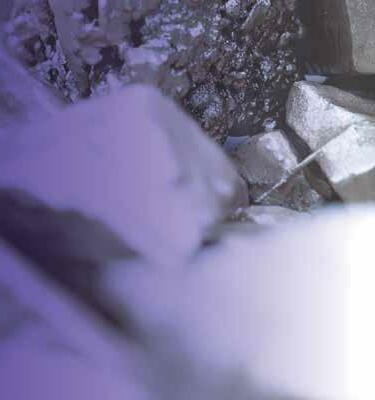
1 minute read
FEATURE
(operating) and monitoring, to decommissioning tailings facilities (closure and post-closure) in conformance with the (GISTM).
Most importantly, the Standard increases accountability on the part of mining companies regarding their tailings management, on the one hand, and widens the scope for independent oversight, on the other.
Advertisement
‘The sum of many parts’
Effective safe and sustainable tailings management is a sum of many parts. Mining companies can utilise different technologies (innovations) to achieve safe and sustainable tailings management that are readily available at their disposal across the mining cycle.
An example of strategic interventions
Interestingly, globally, global mining companies have embraced strategic interventions to achieve safe and sustainable tailings management. The following steps from Harmony Gold outline the basic steps mines must follow:
• Freeboard control
This entails the maintenance of safe operating water levels on top of the TSF. Drone technology is used to support regular freeboard
Technologies in isolation cannot suffice. And so, tailings professionals should continuously stay abreast of the latest trends in tailings management.
Burden or benefit?
At the end of the day, regarding the adoption and prudent application of the Standard, the buck stops with mining companies themselves. Sustainable tailings management ensures compliance with best practice in Environment, Social and Governance (ESG) which is core to their operations in the contemporary atmosphere. For this reason, there is no room for selective application.
There is a huge price for laxity as recent surveillance.
• Water management
Water management to avoid excessive water accumulation in the facilities

• Maintaining stability and safety
Re-mining TSF from the top to the bottom of the face to minimise the risk of sloughing and inundation. In addition, maintaining a stable slope face by stopping limits on the monitoring trends indicate. The ICMM Warns: “If not managed properly, tailings can have chronic adverse impacts on health, wellbeing and environmental integrity, with pollution from effluent and dust emissions being potentially toxic to humans, animals and plants.” gun that controls the angles.
To a mining company, the stakes are high. It results in loss of operating licence and exorbitant sums in penalties (while the culprit may be deep-pocketed, the reputational damage can be irretrievable).
At the end of the day, a rational decision that is good for long-term sustainability has to be made regarding tailings management during a mining operation’s life cycle.
• Erosion controls
• Monitoring and control measures are implemented to ensure compliance. Extensive audits are carried out to indicate compliance with the tailings facility.
• Fallout dust management
• Emergency preparedness and response
Expand your network with attendees from 120+ countries
1,100+ exhibitors showcasing the best in the industry
Hundreds of hours of programming presented by industry experts
Engage with private, retail and institutional investors and senior executives








